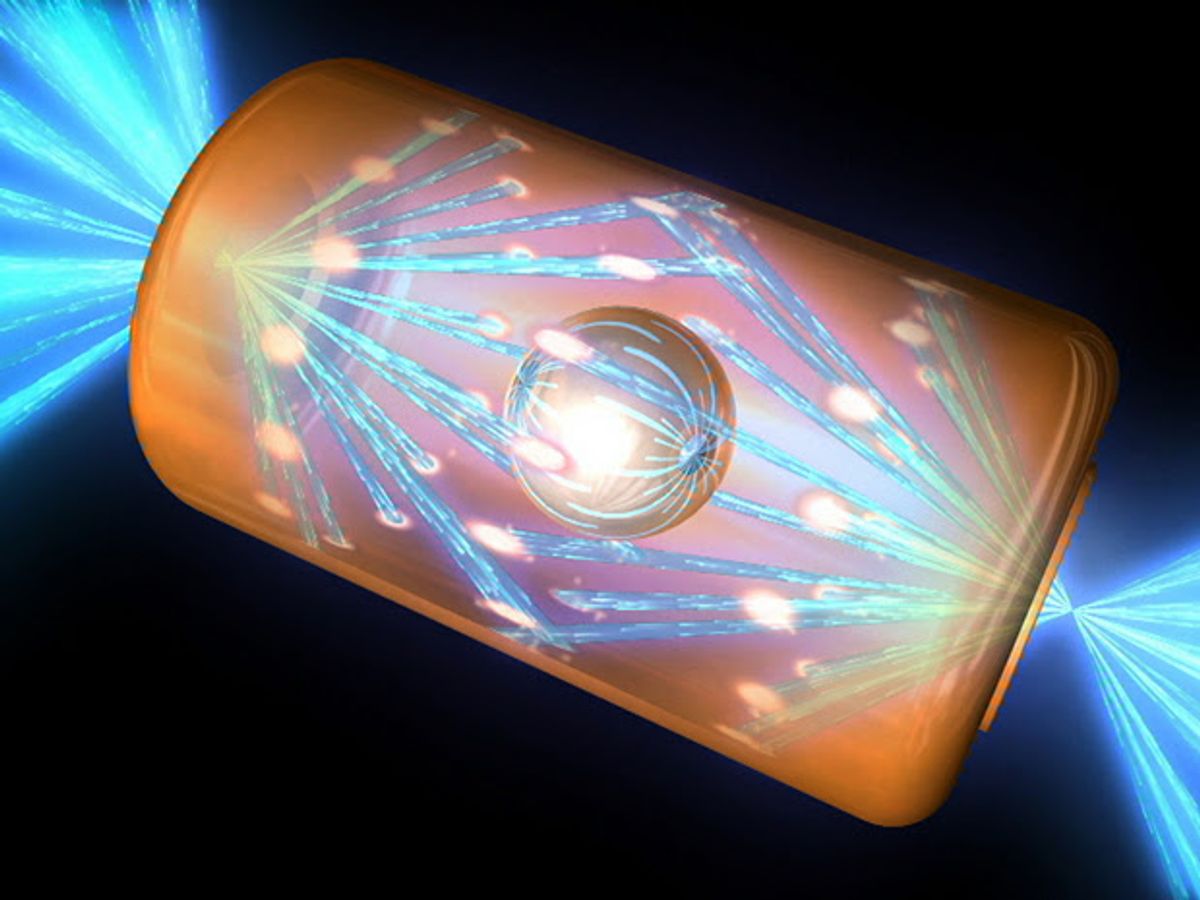Big fusion milestones are rare things. But a team based at the National Ignition Facility (NIF) says they've reached one. For the first time, they've been able to get their deuterium-tritium fuel to fuse so that it produces more energy than was deposited into it.
The researchers are quick to note they've not achieved the long-awaited goal of ignition—a self-sustaining fusion reaction that produces more energy than what is sent into the experiment. Most of the 1.8 megajoules of energy in the facility's lasers is still lost in the effort to achieve the temperatures and pressures needed to get fusion started. This process involves hitting the inside of a cylindrical gold container with 192 lasers in order to produce X-rays. That radiation then heats and blasts away the outer layer of a spherical capsule suspended at the center of the cylinder. The reaction force sends the remainder of this target inwards, compressing some 170 micrograms of frozen deuterium-tritium fuel at the center.
Today only about 1 percent of the energy poured into the cylinder actually winds up in the fuel. Still, team leader Omar Hurricane told reporters in a press briefing on Monday that this latest milestone is "kind of a major turning point in a lot of our minds." The results are published this week in a paper in Nature. (A similar announcement was made in August of last year, when some 8000 joules of energy were released in the form of neutrons. In this paper, the team reports yields as high as 17 000 joules.)
The team is also encouraged by evidence of what's called alpha particle heating—a process by which helium atoms created in fusion reactions deposit their energy into the fuel instead of escaping. This "bootstrapping" process—using fusion to create more fusion—is what will be needed to ultimately get the yield up to ignition levels.
NIF has been taking a more research-oriented approach to fusion since late 2012, when the facility wrapped up the National Ignition Campaign, aimed at achieving ignition in just two years. The laser shots fired during that campaign tended to have what's called a "low-foot"—the laser power began at low power and was then ramped up. This approach made target compression fairly easy, but it created instabilities and asymmetries that sap power out of the compression process. "Those early implosions tended to rip themselves apart," Hurricane told reporters on Monday.
He and his colleagues took what might be called a step back, experimenting with "high-foot" pulses. These laser shots start out at high power, which quickly raises the temperature of the capsule. This approach makes capsule shells harder to compress, but also increases the speed at which layers are blasted off the capsule, which helps stop instabilities from growing. "Those two effects act together to make it more stable," Hurricane said.
The team is now exploring ways to increase the yield even further with adjustments to capsule design.
In terms of yield, NIF is still behind the magnetic confinement approach pursued by experiments such as the Joint European Torus (which currently holds the record), Steven Cowley, director of the UK's Culham Centre for Fusion Energy, told IEEE Spectrum in an email. But he adds both approaches are now finally, after 60 years, getting "close" to controlled fusion. "We must keep at it."
Rachel Courtland, an unabashed astronomy aficionado, is a former senior associate editor at Spectrum. She now works in the editorial department at Nature. At Spectrum, she wrote about a variety of engineering efforts, including the quest for energy-producing fusion at the National Ignition Facility and the hunt for dark matter using an ultraquiet radio receiver. In 2014, she received a Neal Award for her feature on shrinking transistors and how the semiconductor industry talks about the challenge.



